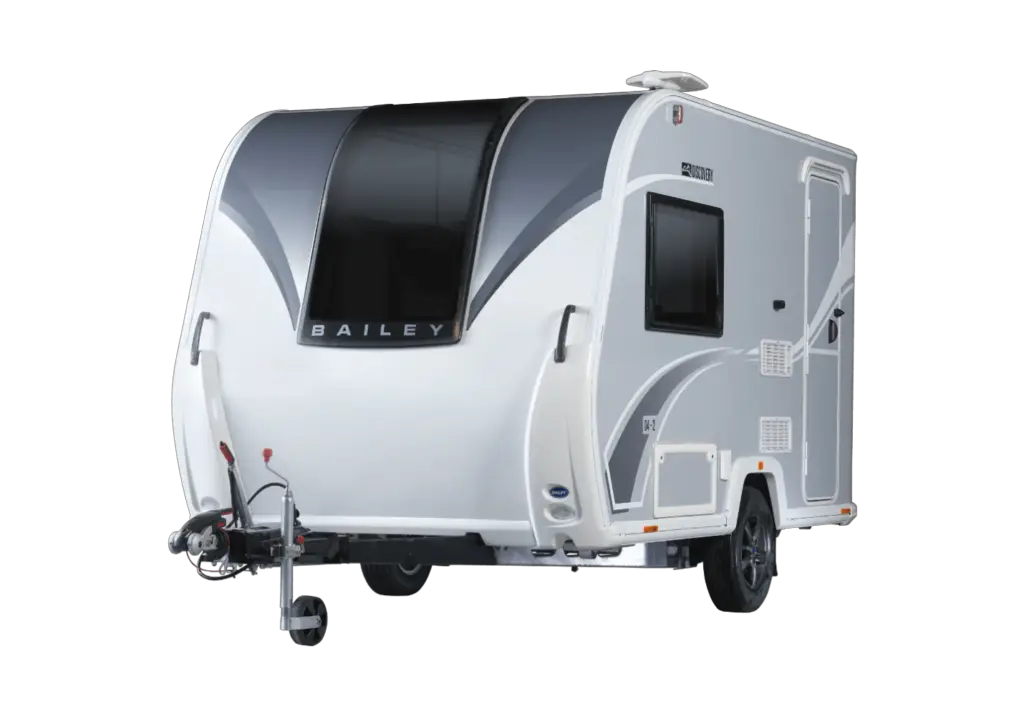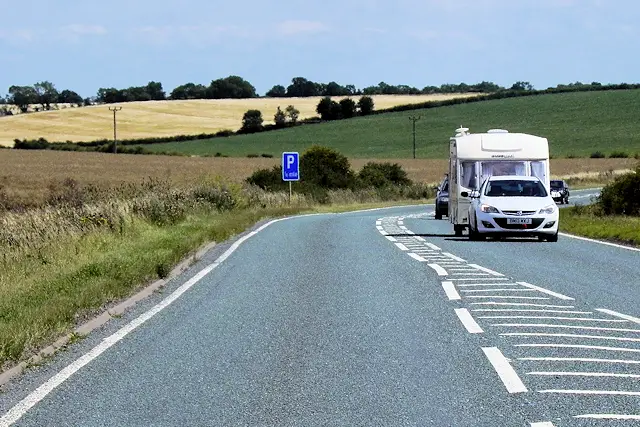If you’re thinking of purchasing your first caravan, you’re probably asking yourself, “are caravans difficult to tow?” I know that I was asking myself that before buying mine.
Unfortunately, it’s difficult to answer the question of whether a caravan is difficult to tow. It will depend on several factors, such as:
- The dimensions of the caravan
- The weight of the caravan
- How much you are storing in the caravan
So while I can’t objectively answer whether caravans are easy to tow or not, I can give you some tips for towing your caravan safely. So in this article, I’ve put together all the tips I can think of for towing a caravan, based on my personal opinions and what other caravan owners have to say.
Tips For Towing A Caravan For The First Time
Here are some tips for towing a caravan, as well as things to know before you tow and equipment that can make towing a caravan easier.
Things To Know Before Buying A Caravan
Before we get onto our tips for towing a caravan, there are some things that you should know. In this section of this blog post, I’m going to explain what you must know before investing in anything.
Make Sure You Can Tow A Caravan On Your Licence
Before even purchasing a caravan, it’s really important to know whether you can actually tow a caravan on your licence. The rules depend on the country that you are based in, but let’s take a look at the UK laws on towing.
According to Gov.UK, what you can tow depends on when you passed your driving test. If your licence was issued on or after 1 January 1997, you can:
- Drive a car or van up to 3,500kg maximum authorised mass (MAM) towing a trailer of up to 750kg MAM
- Tow a trailer over 750kg MAM as long as the combined MAM of the trailer and towing vehicle is no more than 3,500kg
If your licence was issued before 1 January 1997, the Gov.UK site reads:
- If you passed your car test before 1 January 1997 you’re usually allowed to drive a vehicle and trailer combination up to 8,250kg MAM.
If you passed on or after 1 January 1997, this means there are an awful lot of caravans that you can’t tow. You can possibly only tow something light, such as a Bailey Discovery D4-2.

If you passed your test since 1 January 1997, you can take the Car and Trailer Driving Test, otherwise known as the B+E Test. If you pass the B+E Test, you can drive a motor vehicle not exceeding a MAM of 3,500kg towing any trailer within the instructed maximum towing weight. Depending on the car that you own, this would put you in a position where you can tow any caravan.
Know The Towing Capacity Of Your Car
Once you’ve confirmed that your licence will allow you tow the caravan that you are looking at, you need to know what your car is capable of. What I mean is you must know the towing capacity of your car.
The towing capacity of your car is the maximum weight that your car can tow. You can often find this information in your vehicle’s handbook, but you might have to work it out yourself. Fortunately, it is easy to work out the maximum towing capacity of your vehicle.
You can use the numbers on your VIN plate to work out how much the towing capacity of your car.
On your vehicle’s VIN plate, you need to look at line one and two. Line one is the maximum allowable mass. Line two is the maximum train mass.
To work out your vehicle’s towing capacity, subtract line one from line two. Then you will have the towing limit of your vehicle.
If you’re towing for the first time – which most people reading this blog post probably are – it’s advisable that you follow the 85% rule. While this isn’t a rule that you legally have to follow, it can make your life much easier when you are towing for the first time. So what is the 85% rule?
The 85% rule states that the caravan’s MTPLM (maximum technically permissible laden mass) should not exceed 85% of the car’s kerbweight. The validity of this advice has been discussed time and time again over the years, but I strongly believe it is sound advice for drivers new to towing. If you have a lot of experience, you don’t need to follow this advice. However, if you are new to towing, it can help you a lot and make the caravan you are towing easier to tow.
Tips For Towing A Caravan For The First Time
Now we’ve covered the things that you should know before purchasing your caravan, let’s move onto some tips for towing your caravan for the first time.
Some of these tips will seem simple, but it’s surprising how often you can overlook the things that seem obvious! With these tips, you’ll be armed with the knowledge you need to comfortably tow your caravan.
Practice Manoeuvres Before Travelling Anywhere Far
This may seem like a really basic tip, but it’s an important one to start off with. Before travelling anywhere far, make sure that you practice potentially tricky manoeuvres such as parking or reversing while towing your caravan.
Manoeuvres are much more difficult when you are towing a caravan, so it’s important that you know what you’re doing before you travel anywhere. The last thing you want is to end up in a sticky position because you didn’t figure out how to reverse while towing your caravan before travelling!
The video above is a really handy video produced by The Camping and Caravanning Club that shows you how to reverse a caravan. As it says in the video, it’s difficult to get your head around reversing a caravan for the first time. It can feel like you’re reversing in the wrong direction, even though you aren’t. Watch the video above to see for a clearer example of what I mean so you don’t get caught out when reversing your caravan!
Just get in plenty of practice in an empty car park for example. Wherever you go to practice, make sure you are as comfortable as can be. That way, you can make sure you get it perfect when you’re onsite!
Take It Easy
One of the biggest tips I have for when you’re towing a caravan is take it easy! There’s nothing worse than getting yourself into a panic and causing yourself to drive dangerously. What I mean by take it easy is:
- Brake earlier than usual
- Take corners widely
- Give yourself more time at roundabouts
It’s important that you brake earlier than you usually would because your car and caravan combined are obviously much heavier than just your car. This means that your vehicle and trailer combination will take longer to slow down coming up to junctions. Brake nice and early to avoid getting yourself into a panic when you come up to junctions.

Another important to remember is how much extra length you have to accommodate for now you are towing a caravan. The length of your car and caravan combined mean that you have to take corners wider than you normally would. If you don’t, you run the risk of your caravan tyres clipping the kerb or cutting the corner altogether. While this might not seem too much of an issue, you can end up damaging your caravan’s tyres. That could bring your holiday to a rapid holt!
Give yourself more time at roundabouts and other junctions. It will take you much longer to accelerate when you’re towing your caravan. A gap that might normally be fine might land you in hot water when you’re towing your caravan. It’s best to be careful until you learn how long you can accelerate whilst towing your caravan.
Learn How To Deal With Snaking And Pitching
Before towing a caravan, thinking of snaking and pitching was nearly enough to put me off. However, knowing how to deal with snaking and pitching before either problem occurs is key to staying safe and in control.
Snaking is when your caravan starts swinging excessively from side to side. This can increase in severity until you end up losing control of your vehicle – unless you know how to deal with it.
You can avoid snaking and pitching altogether if you load your caravan carefully. Here’s a video from Caravan Guard that gives you more information on loading a caravan carefully:
The basics of loading a caravan correctly are:
- Store the heaviest items on the floor of the caravan above the axle
- Only store very light items in lockers lining the walls
- Make sure the nose of the caravan is slightly heavier than the rear
If you follow this advice and you still find your caravan snaking or pitching, don’t panic. Take your feet off the pedals – don’t brake or accelerate. Instead, keep steering in a straight line. By doing this, your caravan should come back into your control.


